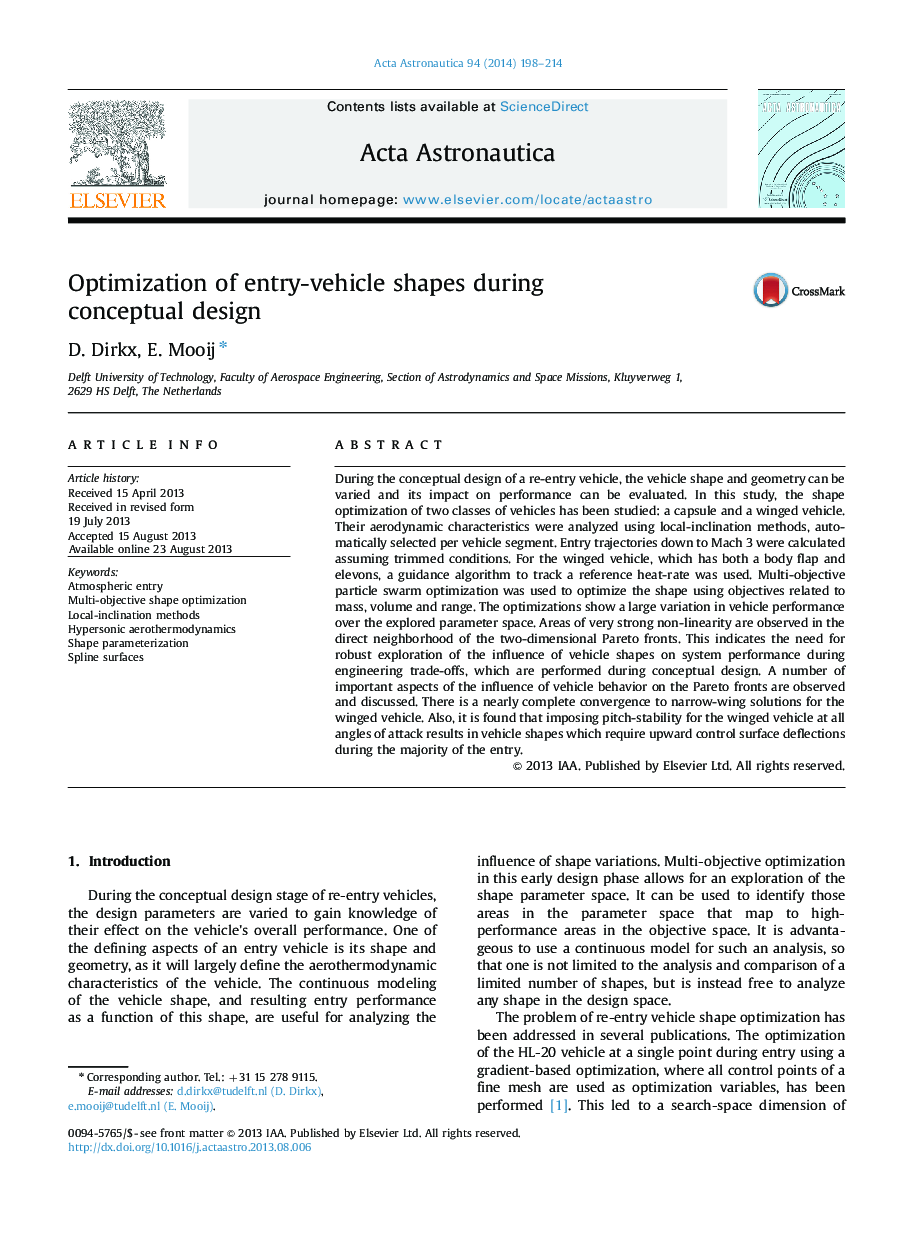| Article ID | Journal | Published Year | Pages | File Type |
|---|---|---|---|---|
| 10680830 | Acta Astronautica | 2014 | 17 Pages |
Abstract
During the conceptual design of a re-entry vehicle, the vehicle shape and geometry can be varied and its impact on performance can be evaluated. In this study, the shape optimization of two classes of vehicles has been studied: a capsule and a winged vehicle. Their aerodynamic characteristics were analyzed using local-inclination methods, automatically selected per vehicle segment. Entry trajectories down to Mach 3 were calculated assuming trimmed conditions. For the winged vehicle, which has both a body flap and elevons, a guidance algorithm to track a reference heat-rate was used. Multi-objective particle swarm optimization was used to optimize the shape using objectives related to mass, volume and range. The optimizations show a large variation in vehicle performance over the explored parameter space. Areas of very strong non-linearity are observed in the direct neighborhood of the two-dimensional Pareto fronts. This indicates the need for robust exploration of the influence of vehicle shapes on system performance during engineering trade-offs, which are performed during conceptual design. A number of important aspects of the influence of vehicle behavior on the Pareto fronts are observed and discussed. There is a nearly complete convergence to narrow-wing solutions for the winged vehicle. Also, it is found that imposing pitch-stability for the winged vehicle at all angles of attack results in vehicle shapes which require upward control surface deflections during the majority of the entry.
Keywords
Related Topics
Physical Sciences and Engineering
Engineering
Aerospace Engineering
Authors
D. Dirkx, E. Mooij,
